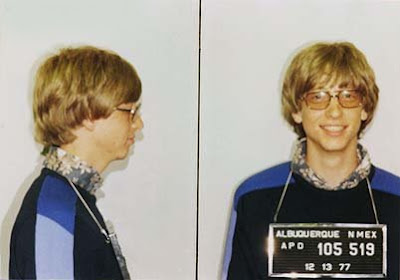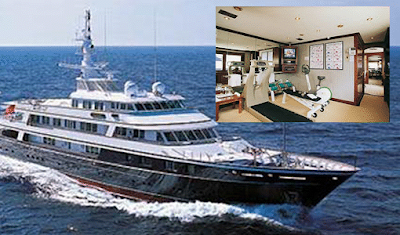Saturday, February 6, 2010
Tokyo Stock Exchange
The Tokyo Stock Exchange (TSE), located in Tokyo, Japan, is the second largest stock exchange in the world based on monetary volume, just behind the New York Stock Exchange. Under the authorization of the Japanese Prime Minister, Junichiro Koizumi, the TSE provides a market for securities exchange. The major functions of the exchange are to provide a market place, monitor trading, list securities, monitor listed securities, and supervise trading participants. Top management is comprised of nine directors, four auditors, and nine executive officers, headed by acting Chairman and CEO Taizo Nishimuro.
The exchange was established on May 15, 1878 and issued government bonds to former samurai. By the 1920s, when Japan experienced rampant growth in their economy, trading stocks over bonds, gold, and silver currencies became the norm. The exchange was shut down in 1945 and reopened in 1949 under the guidance of American authorities after World War II. Today, the TSE currently lists 2,375 domestic companies and 27 foreign companies. The TSE accounts for 90.6% of all securities transactions in Japan, dwarfing its rivals, The Osaka Stock Exchange (4.2%) and The Nagoya Stock Exchange (0.1%).
Standard trading hours are from 9:00 a.m. to 11:00 a.m. and 12:30 p.m. to 3:00 p.m. Stocks listed on the exchange are divided into three sections: the First Section, for large companies; the Second Section, for mid-sized companies; and the Mothers Section, for high-growth startup companies. As of June 2006, there are 1,724 companies listed in the First Section, 494 in the Second Section, and 157 in the Mothers Section, proclaimed as the fairest, most liquid, and fastest growing market in Japan.
The main indices tracking the Tokyo Stock Exchange are the Nikkei 225 and the TOPIX. The Nikkei average is an index of companies selected and calculated by the Nihon Keizai Shimbun, Japan’s largest business newspaper. It is a price-weighted average and is the most watched index for Asian stocks. The TOPIX measures all First Section listed companies and the J30 index of large industrial companies. According to TSE, the TOPIX is considered as the most appropriate benchmark for evaluating portfolio management.
Recently, the TSE has been under scrutiny for system failures and insufficient system capacity. In November 2005, the exchange was only able to operate for 90 minutes due to technical issues with a newly installed transactions system. It was the longest interruption in the history of the exchange. A month later, on December 8, a typing error at Mizuho Financial Group, Japan’s second-biggest bank, to sell shares of J-Com resulted in a net loss of $347 million which is to be shared between the exchange and the bank. And most recently on January 17, 2006, after a raid by prosecutors on the internet company Livedoor, the TSE was forced to close early as trade volume nearly exceeded the system’s capacity of 4.5 million trades per day. Consequently, the Nikkei fell 2.8% and the exchange increased its order capacity to five million trades per day. Livedoor is now delisted.
Chairman Nishimuro recognizes that these failures are “a grave situation which could shake the confidence of investors at home and abroad.” TSE is working to improve its infrastructure to reduce the number of system failures and is continuing to increase system capacity.
Source: TSE Website,
www.tse.or.jp/english/
realated articles:
Tokyo Stock Exchange
Day Trading: Profitable But Risky
The Bank Of Japan
The European Central Bank
The Bank Of England
Gifts From England
Philippines Light Rail Transit Public Transportation
The Manila Light Rail Transit System (Filipino: Sistema ng Magaan na Riles Panlulan ng Maynila),[citation needed] popularly known as the LRT, is a metropolitan rail system serving the Metro Manila area in the Philippines. Its twenty-nine stations over 28.8 kilometers (17.9 mi) of mostly elevated track form two lines. LRT Line 1, also called the Yellow Line, opened in 1984 and travels a north–south route. LRT Line 2, the Purple Line, was completed in 2004 and runs east–west.
The LRT is operated by the Light Rail Transit Authority (LRTA), a government-owned and controlled corporation under the authority of the Department of Transportation and Communications (DOTC). Along with the Manila Metro Rail Transit System (MRT, also called the Blue Line), and the Philippine National Railways (PNR), the LRT is part of Metro Manila's rail transportation infrastructure known as the Strong Republic Transit System (SRTS)
Stations
 The People Power Revolution was a series of nonviolent and prayerful mass street demonstrations in the Philippines that occurred in 1986. It was the inspiration for subsequent non-violent demonstrations around the world including those that ended the communist dictatorships of Eastern Europe.
The People Power Revolution was a series of nonviolent and prayerful mass street demonstrations in the Philippines that occurred in 1986. It was the inspiration for subsequent non-violent demonstrations around the world including those that ended the communist dictatorships of Eastern Europe.

 In 1990, it was voted by the BMW Tropical Beach Handbook as one of the best beaches in the world
In 1990, it was voted by the BMW Tropical Beach Handbook as one of the best beaches in the world
 Barasoain Church (also known as Our Lady of Mt. Carmel Parish) is a Roman Catholic church built in 1630 in Malolos City, Bulacan.
Barasoain Church (also known as Our Lady of Mt. Carmel Parish) is a Roman Catholic church built in 1630 in Malolos City, Bulacan.
 Laguna de Bay (Filipino: Lawa ng Bay; English: Laguna de Bay is the largest lake in the Philippines and the third largest freshwater lake in Southeast Asia
Laguna de Bay (Filipino: Lawa ng Bay; English: Laguna de Bay is the largest lake in the Philippines and the third largest freshwater lake in Southeast Asia
 Malacañan Palace, is the official residence of the President of the Philippines.
Malacañan Palace, is the official residence of the President of the Philippines.






















 >
>




















































No comments:
Post a Comment